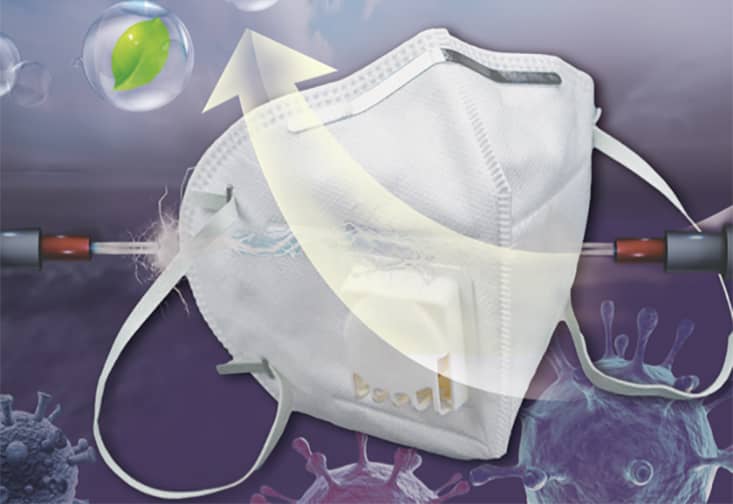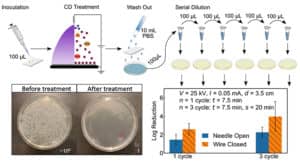Thrive
USF researchers combat mask shortages, pollution with new technology

Researchers at the University of South Florida have created a technology that addresses both disposable face mask shortages and pollution concerns surrounding mask disposal.
Two assistant professors at USF have invented a way to rapidly disinfect and electrostatically recharge N95 respirators, making the masks safe to reuse and restoring their effectiveness against Covid-19 and other airborne viruses. In a study published in Environmental Science and Technology, the researchers proved their sterilization technology could restore an N95 respirator’s efficiency to about 95%. They achieved the same efficiency after 15 cycles of treatment.
Sarah Zhong, assistant professor in the USF Department of Mechanical Engineering and co-principal investigator of the project, said her team began work on the technology in February 2020 – just before Covid began to spread across the United States.
“We were very shocked by the pandemic that was in China at the time,” said Zhong. “There were a lot of people suffering from mask shortages, and the U.S. would have the same problem. So, we were thinking if there was anything we could do to contribute or help in this pandemic.”
The technology kills coronavirus by using corona discharge – an ambient atmospheric pressure plasma. Corona discharge treatment on N95 masks can kill 99.9999% of bacteria after three cycles. Zhong said she had years of previous experience using corona discharge to inject permanent charges into polymer films and decided to apply her knowledge on the subject to face masks.
Libin Ye, assistant professor in the USF Department of Cell Biology, handled the disinfection aspects, and the pair enlisted three graduate students to help create the technology.
The sterilization technology works by deactivating pathogens on a mask and restoring electrostatic charges. The process does not require extra heating, chemicals or contact, making it safe and convenient to apply. It is also safer than using ultraviolet radiation and requires only 1.25 watts of electricity.

Zhong said it is not currently safe to reuse masks or treat them with disinfectants. This requires someone to use a new mask every day – or a few hundred every year, multiplied by millions of people around the world.
“Now we have this new technology to treat a mask,” said Zhong. “That means you can use one mask for 10 days. It can reduce mask usage by 90%.”
The technology not only ensures that the same N95 respirator is still providing protection after multiple uses, but it also drastically reduces the pollution caused by the constant disposing of face masks. A report by the Hong-Kong based marine conservation organization OceansAsia stated that 1.56 billion face masks ended up in the world’s oceans in 2020 alone, and they could take more than 450 years to fully decompose.
“Masks are made of polymers that cannot decompose after hundreds of years,” said Zhong. “With the pandemic still going on, there will be more and more masks disposed and more pressure on the environment.”
“If we can reduce the amount of masks being disposed of into the environment and reduce the widespread pollution, then we can help the environment to relieve this burden.”
Zhong said their research has proven that the technology not only disinfects masks but also surfaces. People could sanitize homes, hospitals, restaurants and schools using this technology instead of chemicals. She added that using fewer chemicals is also beneficial to the environment.
Zhong said the technology is fully developed, and now the focus is on finding investors, designers and manufacturers to bring their product to the public. These designs will include handheld devices for personal use and larger devices for industrial applications in places such as hospitals.
Zhong and her team were previously awarded a $167,568 RAPID grant from the National Science Foundation and a Covid-19 Rapid Response Research Grant from the USF Office of Research and Innovation to develop the new technology.







